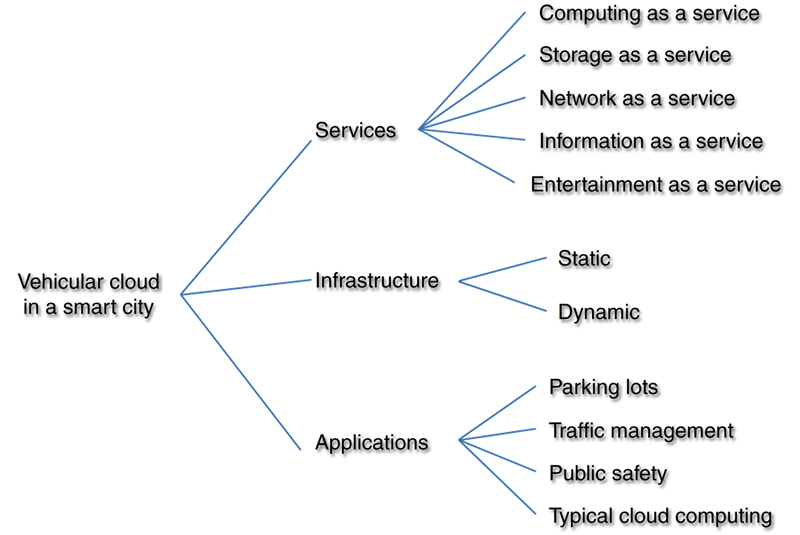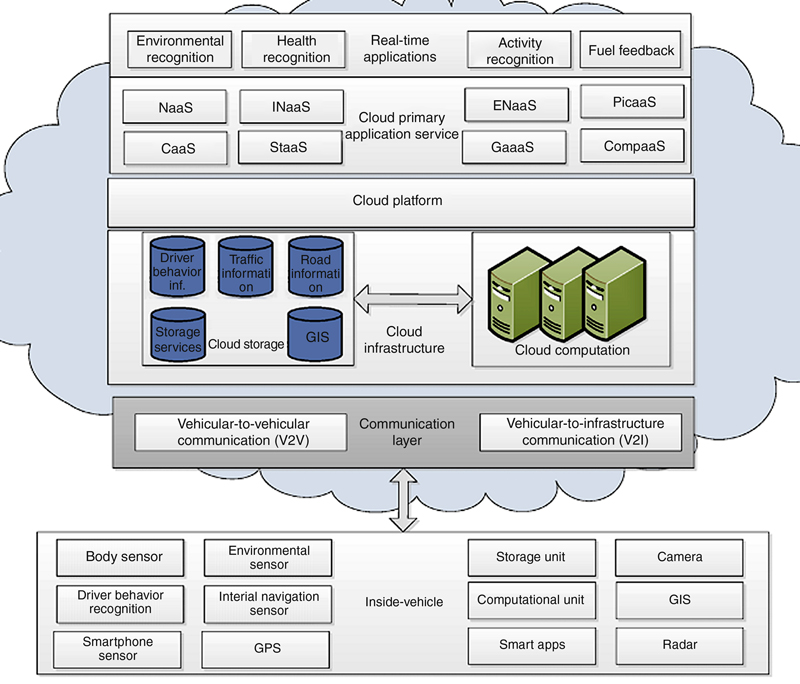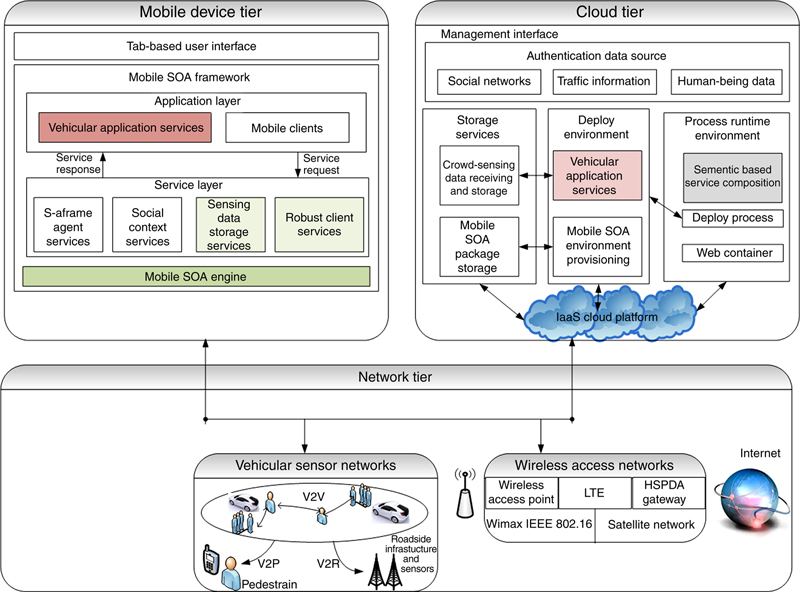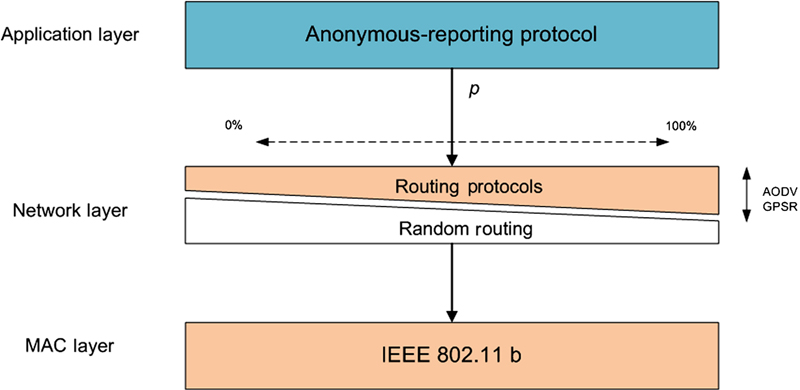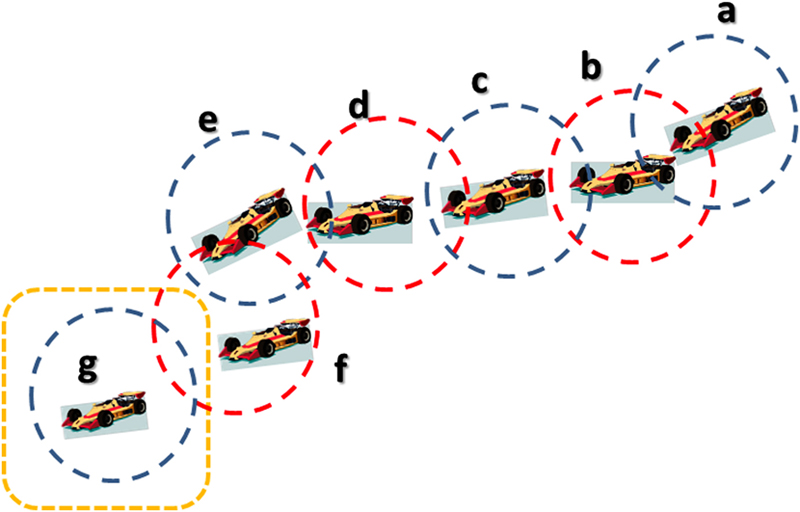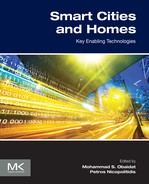References
[1] Yovanof GS, Hazapis GN. An architectural framework and enabling wireless technologies for digital cities & intelligent urban environments. Wireless Pers Commun. 2009;49(3):445–463.
[2] Nam T, Pardo TA. Conceptualizing smart city with dimensions of technology, people, and institutions. In: Proceedings of the 12th annual international digital government research conference: digital government innovation in challenging times. ACM, New York, NY, USA, 2011. p. 282–91.
[3] Giffinger R, Gudrun H. Smart cities ranking: an effective instrument for the positioning of the cities? Archit City Environ. 2010;4(12):7–26.
[4] Washburn D, Sindhu U. Helping CIOs understand “smart city” initiatives. Defining the smart city, its drivers, and the role of the CIO. Forrester, Research Report, 11 February, 2010. <https://www.forrester.com/report/Helping+CIOs+Understand+Smart+City+Initiatives/-/E-RES55590>; [Online].
[5] Gerla M, Lee E-K, Pau G, Lee U. Internet of vehicles: from intelligent grid to autonomous cars and vehicular clouds,” in Internet of Things (WF-IoT), 2014 IEEE World Forum on, March 2014. p. 241–46.
[6] Lee E, Lee EK, Gerla M, Oh SY. Vehicular cloud networking: architecture and design principles. IEEE Commun Mag. 2014;52(2):148–155.
[7] Hu X, Wang L, Sheng Z, TalebiFard P, Zhou L, Liu J, Leung VCM. Towards a service centric contextualized vehicular cloud. In: Proceedings of the fourth ACM international symposium on development and analysis of intelligent vehicular networks and applications. ACM, New York, NY, USA, 2014, DIVANet 14. p. 73–80.
[8] Kantarci B. Cyber-physical alternate route recommendation system for paramedics in an urban area. In: IEEE wireless communications and networking conference (WCNC), March 2015. p. 2276–81.
[9] Research and Innovative Technology Administration (RITA) U.S. Department of Transportation (US DOT), About ITS. <http://www.its.dot.gov/faqs.htm>; 2015. [Online].
[10] Taleb T, Sakhaee E, Jamalipour A, Hashimoto K, Kato N, Nemoto Y. A stable routing protocol to support its services in vanet networks. IEEE Trans Vehicular Technol. 2007;56(6):3337–3347.
[11] Losilla F, Garcia-Sanchez AJ, Garcia-Sanchez J, Garcia-Haro J. On the role of wireless sensor networks in intelligent transportation systems. In: 2012 14th international conference on transparent optical networks (ICTON); July 2012. p. 1–4.
[12] Yang Y, Bagrodia R. Evaluation of vanet-based advanced intelligent transportation systems. In: Proceedings of the sixth ACM international workshop on vehicular internetworking; 2009. p. 3–12.
[13] Hartenstein H, Laberteaux KP. VANET: vehicular applications and inter-networking technologies. United Kingdom: John Wiley & Sons Ltd; 2010.
[14] Lee U, Gerla M. A survey of urban vehicular sensing platforms. Comput. Netw. 2010;54(4):527–544: .
[15] Gerla M, Kleinrock L. Vehicular networks and the future of the mobile internet. Comput. Netw. 2011;55(2):457–469: .
[16] Wisitpongphan N, Bai F, Mudalige P, Sadekar V, Tonguz O. Routing in sparse vehicular ad hoc wireless networks. IEEE J. Selected Areas Commun. 2007;25(8):1538–1556.
[17] IEEE Standard for Message Sets for Vehicle/Roadside Communications. IEEE Standard 1455–1999. p. 1–134; September 1999.
[18] IEEE 802.11p, Amendment to Standard for Information Technology-Telecommunications and Information Exchange Between Systems-Local and Metropolitan Area Networks-Specific requirements Part 11 Wireless LAN Medium Access Control (MAC) and Physical Layer (PHY) Specifications-Amendment 7 Wireless Access in Vehicular Environment. IEEE Standard IEEE 802.11p, version 2010; 2010.
[19] IEEE Standard 1609.0-2013. IEEE Guide for Wireless Access in Vehicular Environments (WAVE) - Architecture; 2013.
[20] IEEE Standard 1609.2-2016. Standard for Wireless Access in Vehicular Environments (WAVE) Security Services for Applications and Management Messages; 2016.
[21] IEEE Standard 1609.3-2016. Approved Draft Standard for Wireless Access in Vehicular Environments (WAVE) Networking Services; 2016.
[22] IEEE Standard 1609.4-2016. Standard for Wireless Access in Vehicular Environments (WAVE) Multi-Channel Operations; 2016.
[23] IEEE 1609.6. Remote Management Service (Under Development).
[24] IEEE Standard 1609.11-2010. Over the-Air Data Exchange Protocol for Intelligent Transportation Systems (ITS); 2010.
[25] IEEE Standard 1609.12-2016. Identifier Allocations; 2016.
[26] Research and Innovative Technology Administration (RITA) U.S. Department of Transportation (US DOT). Fact Sheet on IEEE 1609—Family of Standards for Wireless Access in Vehicular Environments (WAVE). <http://www.standards.its.dot.gov/Factsheets/PrintFactsheet/80>; [Online].
[27] FCC 47 CFR 90 Telecommunications, Private land mobile radio services, 371 – 377: Regulations governing the licensing and use of frequencies in the 5850–5925 MHz band for dedicated short-range communications service (DSRCS).
[28] ETSI EN 302 571 V1.2.1 (2013-09). Intelligent Transport Systems (ITS); Radio communications equipment operating in the 5855 MHz to 5925 MHz frequency band; September 2013.
[29] ETSI Standard (Draft). Intelligent transport systems (ITS); access layer specification for intelligent transport systems operating in the 5 Ghz frequency band. ETSI EN 302 663 V1.2.0 (2012-11); 2012.
[30] Status of ITS Communication Standards Document HTG3-1 Version: 2012-11-12. EU-US ITS Task Force Standards Harmonization Working Group Harmonization Task Group 3; November 12, 2012.
[31] Willke TL, Tientrakool P, Maxemchuk NF. A survey of inter-vehicle communication protocols and their applications. IEEE Commun Survey Tutorials. 2009;11(2):3–20.
[32] Karagiannis G, Altintas O, Ekici E, Heijenk G, Jarupan B, Lin K, Weil T. Vehicular networking: a survey and tutorial on requirements, architectures, challenges, standards and solutions. IEEE Commun Surveys Tutorials. 2011;13(4):584–616.
[33] Sommer C, Dressler F. Vehicular networking. United Kingdom: Cambridge University Press; 2014.
[34] Arif S, Olariu S, Wang J, Yan G, Yang W, Khalil I. Datacenter at the airport: reasoning about time-dependent parking lot occupancy. IEEE Trans Parallel Distrib Syst. 2012;23:2067–2080.
[35] Dinh H, Lee C, Niyato D, Wang P. A survey of mobile cloud computing: architecture, applications and approaches. Wireless Commun Mobile Compu. 2013;13:1587–1611.
[36] Mousannif H, Khalil I, al Moatassime H. Cooperation as a service in VANETs. J Universal Comput Sci. 2011;17:1202–1218.
[37] Refaat TK, Kantarci B, Mouftah HT. Dynamic virtual machine migration in a vehicular cloud. IEEE Symp Comput Commun (ISCC) 2014. p. 1–6.
[38] Olariu S, Hristov T, Yan G. The next paradigm shift: from vehicular networks to vehicular clouds. In: Basagni S, Conti M, Giordano S, Stojmenovic I, eds. Chapter in Mobile Ad hoc Networking: Cutting Edge Directions. Wiley-IEEE Press; 2013:645–700.
[39] Chung T-Y, Chen Y-M, Hsu C-H. Adaptive momentum-based motion detection approach and its application on handoff in wireless networks. Sensors. 2009;9(7):5715.
[40] Yang X, Liu J, Vaidya NF, Zhao F. A vehicle-to-vehicle communication protocol for cooperative collision warning. MOBIQUITOUS 2004. In: The first annual international conference on mobile and ubiquitous systems: networking and services; August 2004. p. 114–23.
[41] Whaiduzzaman Md, Sookhak M, Gani A, Buyya R. A survey on vehicular cloud computing. J Netw Comput Appl. 2014;40:325–344.
[42] Bordley L, Cherry CR, Stephens D, Zimmer R, Petrolino J. Commercial motor vehicle wireless roadside inspection pilot test, part B: stakeholder perceptions. Transportation Research Board 91st Annual Meeting; 2012.
[43] Hussain R, Son J, Eun H, Kim S, Oh H. Rethinking vehicular communications: merging VANET with cloud computing. In: IEEE 4th international conference on cloud computing technology and science; December 2012. p. 606–9.
[44] Boutaba R, Zhang Q, Zhani MF. Virtual machine migration in cloud computing environments: benefits, challenges, and approaches. In: Mouftah HT, Kantarci B, editors. Communication Infrastructures for Cloud Computing. IGI Global, Hershey, PA; 2013. p. 383–408.
[45] Bifulco F, Amitrano CC, Tregua M. Driving smartization through intelligent transport. Chinese Bus Rev. 2014;13:243–259.
[46] Kley F, Lerch C, Dallinger D. New business models for electric cars: a holistic approach. Energ. Policy. 2011;39(6):3392–3403.
[47] Rodier CJ, Shaheen SA. Transit-based smart parking: an evaluation of the San Francisco Bay Area Field test. Transport Res Part C. 2010;18(2):225–233.
[48] Senart A, Kurth S, Roux GL. Assessment framework of plug-in electric vehicles strategies. In: 2010 First IEEE international conference on smart grid communications (SmartGridComm); 2010. p. 155–60.
[49] Berthon B, Guittat P. Rise of the intelligent city. <http://www.cas-uk.com/SiteCollectionDocuments/PDF/Accenture-Outlook-Rise-of-the-Intelligent-City-Sustainability.pdf>; 2011 [Online].
[50] Greengard S. Smart transportation networks drive gains. Commun ACM. 2014;58(1):25–27.
[51] Open Automotive Alliance. <http://openautoalliance.net> [Online].
[52] Parker Application. <http://theparkerapp.com/> [Online].
[53] Aparcar Application. <http://aparcar.com/> [Online].
[54] Waze Application. <https://www.waze.com/> [Online].
[55] Barba CT, Aguiar LU, Igartua MA, Parra-Arnau J, Monedero DR, Forn J, Pallars E. A collaborative protocol for anonymous reporting in vehicular ad hoc networks. Comput Standard Interf. 2013;36(1):188–197.
[56] Benjumea V, Lopez J, Troya JM. Specification of a framework for the anonymous use of privileges. Telemat Inform. 2006;23(3):179–195.
[57] Arkian HR, Atani RE, Pourkhalili A, Kamali S. Cluster-based traffic information generalization in vehicular ad-hoc networks. Vehicular Commun. 2014;1(4):197–207.
[58] Gerla M, Tsai JT-C. Multicluster, mobile, multimedia radio network. Wireless Netw. 1995;1(3):255–265.
[59] Venkataraman H, Delcelier R, Muntean G-M. A moving cluster architecture and an intelligent resource reuse protocol for vehicular networks. Wireless Netw. 2013;19(8):1881–1900.
[60] Arkian HR, Atani RE, Pourkhalili A, Kamali S. A stable clustering scheme based on adaptive multiple metric in vehicular ad-hoc networks. J Inform Sci Eng. 2015;31(2).
[61] Tal I, Muntean G-M. User-oriented fuzzy logic-based clustering scheme for vehicular ad-hoc networks. In: 2013 IEEE 77th vehicular technology conference (VTC Spring); June 2013. p. 1–5.
[62] Mershad K, Artail H. Finding a star in a vehicular cloud. IEEE Intelligent Transport Syst Mag. 2013;5(2):55–68.
[63] Alazawi Z, Altowaijri S, Mehmood R, Abdljabar MB. Intelligent disaster management system based on cloud-enabled vehicular networks. In: 11th International conference on ITS telecommunications (ITST); August 2011. p. 361–8.
[64] Amici R, Bonola M, Bracciale L, Rabuffi A, Loreti P, Bianchi G. Performance assessment of an epidemic protocol in VANET using real traces. Procedia Comput Sci. 2014;40(0):92–99: .
[65] Wan J, Lao S, Zhang D, Yang LT, Lloret J. Context-aware vehicular cyber-physical systems with cloud support: architecture, challenges, and solutions. IEEE Commun Mag. 2014;52:106–113.
[66] Yan G, Rawat DB, Bista BB. Towards secure vehicular clouds. In: Proceedings of complex, intelligent and software intensive systems (CISIS); 2012. p. 370–5.
[67] Aloqaily M, Kantarci B, Mouftah HT. Provisioning delay effect of partaking a trusted third party in a vehicular cloud. Global Information Infrastructure Symposium (GIIS); September 2014. p. 1–3.
[68] Yan G, Wen D, Olariu S, Weigle MC. Security challenges in vehicular cloud computing. IEEE Trans Intelligent Transport Syst. 2013;14/1:284–294.
[69] Pearson S, Benameur A. Privacy, security and trust issues arising from cloud computing. In: IEEE second international conference on cloud computing technology and science (CloudCom); 2010. p. 693–702.
[70] Younis YM, Kifaya K. Secure cloud computing for critical infrastructure: a survey. Liverpool John Moores University, United Kingdom, Technical Report; 2013.
[71] Ristenpart T, Tromer E, Shacham E, Savage S. Hey, you, get off of my cloud: exploring information leakage in third-party compute clouds. In: Proceedings of ACM conference on computer and communications security (CSS); November 2009. p. 199–212.
[72] Chang S, Qi Y, Zhu H, Zhao J, Shen X. Footprint: detecting Sybil attacks in urban vehicular networks. IEEE Trans Parallel Distrib Syst. 2012;23/5:1103–1114.
[73] Raya M, Hubaux JP. The security of vehicular ad hoc networks. 3rd ACM workshop on security of ad hoc and sensor networks; 2005. p. 1–11.
[74] Raya M, Huabux JP. Securing vehicular ad hoc networks. Comput Security. 2007;15/1:39–68.
[75] Almutairi AA, Ghafoor A. Risk-aware virtual resource management for multitenant cloud datacenters. IEEE Cloud Comput. 2014;1/3:34–44.
[76] Hsin-Yi T, Siebenhaar M, Miede A, Yu-Lun H, Steinmetz R. Threat as a service? virtualization’s impact on cloud security. IT Professional. 2012;14/1:32–37.
[77] Gerla M. Vehicular cloud computing. 11th Annual Mediterranean ad hoc networking workshop (Med-Hoc-Net); June 2012. p. 152–5.
[78] Whaidduzzaman M, Sookhak M, Ghani A, Buyya R. A survey on vehicular cloud computing. J Netw Comput Appl. 2014;40:325–344.
[79] Anastasopolou K, Tryfonas T, Kokolakis S. Strategic interaction analysis of privacy-sensitive end-users of cloud-based mobile apps. HCI2014 international-human aspects of information security, privacy, and trust; June 2014.
[80] Aloqaily M, Kantarci B, Mouftah HT. On the impact of quality of experience (QoE) in a vehicular cloud with various providers. In: Proceedings of HONET-PFe; December 2014. p. 1–5.
[81] Al-Sultan S, Al-Bayatti A, Zedan H. Context-aware driver behaviour detection system in intelligent transportation systems. IEEE Trans Vehicular Technol. 2013;62/9:4264–4275.
[82] Santa J, Gmez-Skarmeta A. Sharing context-aware road and safety information. IEEE Pervasive Comput. 2009;8/3:58–65.
[83] Kantarci B, Mouftah HT. Trustworthy sensing for public safety in cloud-centric Internet of Things. IEEE Internet Things J. 2014;1/4:360–368.
[84] Besaleva LI, Weaver AC. Applications of social networks and crowdsourcing for disaster management improvement. In: International conference on social computing (SocialCom); September 2013. p. 213–9.
[85] Duan J, Gao D, Yang D, Foh CH, Chen H. An energy-aware trust derivation scheme with game theoretic approach in wireless sensor networks for IoT applications. IEEE Internet of Things J. 2014;1(1):58–69.




